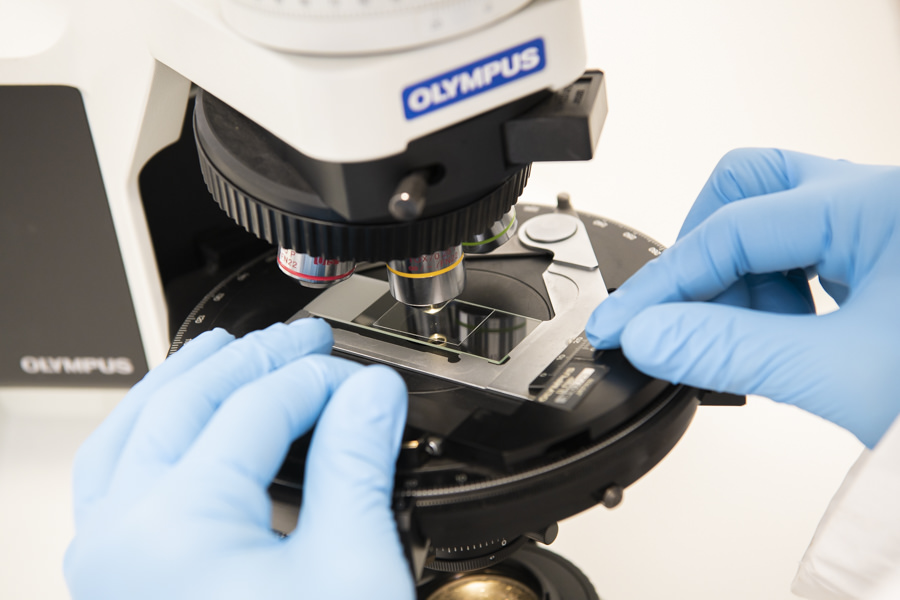The Total Process of Accredited Asbestos Testing to Ensure Building Conformity
In the realm of home administration and compliance, the procedure of recognized asbestos testing stands as a vital component to make certain the safety and wellness of occupants. From the first assessment to the final interpretation of outcomes, each stage plays an important function in determining the presence of asbestos within a home.
Accredited Asbestos Testing: Preliminary Assessment
In conducting the initial analysis for approved asbestos testing, a precise assessment of the home's products is important to precisely identify possible asbestos-containing products. This important step entails visually examining all locations of the residential or commercial property, including ceilings, wall surfaces, flooring, insulation, and other building materials that may nurture asbestos. Special attention is provided to products that are prone to harm or disturbance, as these circumstances can launch dangerous asbestos fibers into the air. In addition, tasting of presumed products may be essential to validate the visibility of asbestos via lab evaluation.
Approved asbestos assessors adhere to strict methods established by regulative bodies to make sure the accuracy and integrity of the testing process. By carefully recording findings and making use of innovative screening methods, assessors can offer homeowner with a detailed report detailing the presence of asbestos, if any kind of, and the recommended actions for reduction or elimination. This initial evaluation sets the foundation for subsequent actions to address asbestos worries and ensure the security and conformity of the building.
Sample Collection Treatments for Asbestos Evaluating
Reliable example collection treatments are vital in making sure accurate asbestos testing results and compliance with governing criteria. When accumulating samples for asbestos testing, it is essential to adhere to stringent procedures to decrease the danger of contamination and guarantee the reliability of the results.
To start with, it is necessary to recognize the presumed asbestos-containing products (ACMs) and prioritize tasting areas based on aspects such as the material's problem, access, and potential for disturbance. Asbestos Testing. Samples ought to be gathered from various places within the property to supply an extensive assessment of asbestos presence
Throughout example collection, accredited specialists must wear suitable personal protective devices (PPE) to safeguard versus asbestos direct exposure. They should make use of clean tools, such as disposable gloves and plastic sheet, to avoid cross-contamination in between samples. Samples ought to be meticulously gathered using a defined method, such as wet cleaning or coring, and securely secured in impermeable containers to preserve their honesty during transport to the research laboratory for analysis.
Laboratory Evaluation Process for Asbestos Samples
Upon page completion of the example collection process, the asbestos examples are diligently delivered to recognized laboratories for meticulous evaluation. The very first action in the laboratory evaluation procedure is sample prep work, where the collected samples are very carefully refined to extract the asbestos fibers.

When the analysis is complete, an in-depth report is generated, detailing the searchings for and verifying whether asbestos exists, the kind of asbestos fibers determined, and the focus degrees. This details is critical for residential or commercial property proprietors to take the needed steps to make certain compliance with asbestos guidelines and secure the health of passengers.

Coverage and Analysis of Asbestos Test Results
Accredited asbestos testing research laboratories provide comprehensive reports that use vital insights into the existence, type, and concentration degrees of asbestos fibers located in samples accumulated from homes. These records are crucial for property owners and supervisors to recognize the danger posed by asbestos and make notified choices regarding its monitoring or removal. The records usually consist of info on the techniques used for testing, the locations from which examples were taken, the kind of asbestos recognized (such as chrysotile, amosite, or crocidolite), and the focus levels of asbestos fibers discovered.
Interpreting these outcomes needs expertise to assess the potential wellness dangers connected with asbestos direct exposure, determine the proper strategy, and make certain governing conformity (Asbestos Testing). Depending upon the searchings for, suggestions may range from continued monitoring and maintenance to encapsulation or full asbestos reduction. Home owners must meticulously assess these records and speak with asbestos specialists to create an extensive strategy for resolving any asbestos problems identified
Guaranteeing Building Compliance With Asbestos Rules
To keep adherence with asbestos regulations, property proprietors have to faithfully implement steps to ensure conformity with suitable legislations and standards. As soon as asbestos is determined, building proprietors need to comply with asbestos management plans that synopsis correct control, elimination, or encapsulation treatments to avoid direct exposure and spread of asbestos fibers.
Property owners should offer asbestos recognition training to staff members and passengers to minimize the danger of asbestos exposure and ensure proper handling of products that may include asbestos. Additionally, it is essential to stay investigate this site educated about any type of updates or changes in asbestos regulations to readjust management practices appropriately. By proactively attending to asbestos compliance needs, homeowner can create a risk-free setting for occupants and reduce possible lawful and health and wellness threats associated with asbestos direct exposure.
Conclusion
Finally, recognized asbestos screening is an important process for making sure residential or commercial property compliance with regulations. The preliminary evaluation, sample collection procedures, lab evaluation, and analysis of outcomes are all important actions in this process. By following these procedures, homeowner can identify and deal with any type of asbestos threats existing, safeguarding the health and wellness and safety and security of passengers and maintaining compliance with regulative demands.